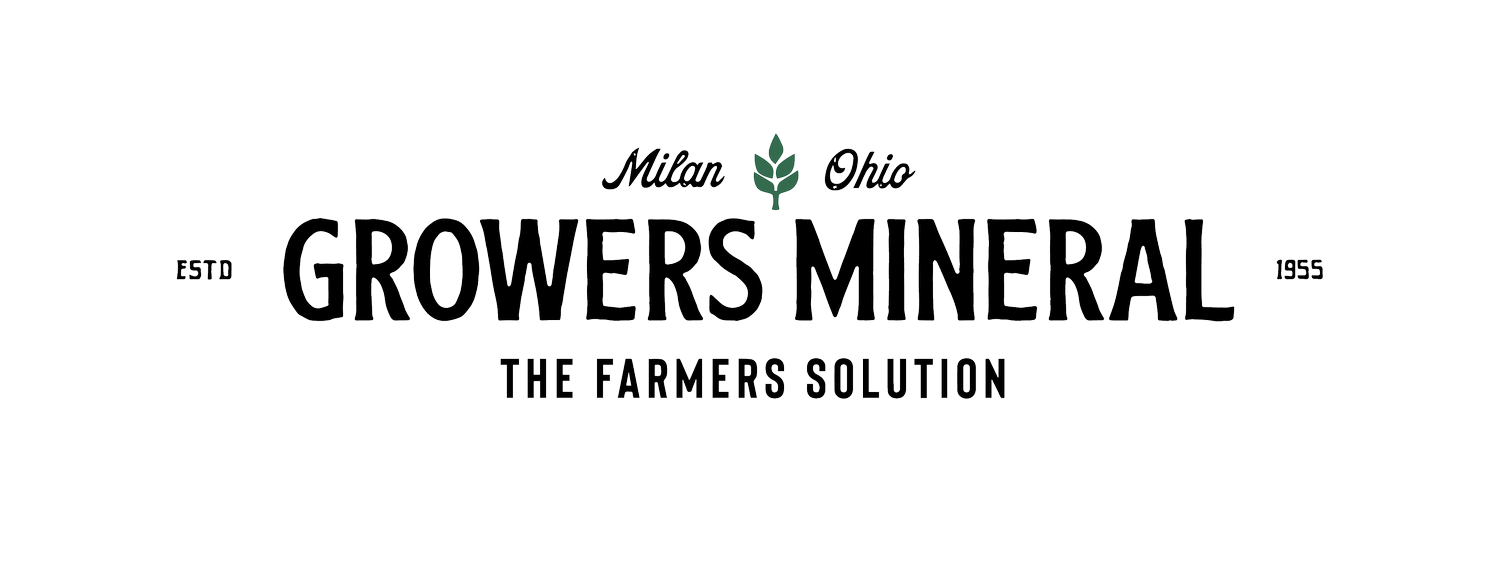Growers Program and Growers Network
Back in April 2024, I received an envelope in the mail from a Growers Mineral, Corp. customer who had the good fortune to have Dr. V.A. Tiedjens visit his farm. As with almost all GMS customers, this farmer locked into the Growers Network. By this, I mean he uses information that comes from the Growers Network, but as many GMS customers do, he wanted to contribute to the Network. In the envelope was a No-Till Farmer article published in February 2024. On the back of this copied article, the customer said, "In 1959, I started listening to Doc explain the value of calcium."
The article "Calcium Attracts Soil Building Microbial Populations" which the customer copied was about detailed research done on soil microbiological life in relation to the use of calcium in soil. The summaries of this research discuss how "ahead of the curve” this research is in agriculture today. Also, the "advanced light technology shows calcium encourages specialized microbes to better yield stable organic matter. “The article also states that, "By adding calcium to the soil, we changed the behavior of microbes."
During the winter meeting season, I had been able to locate through Internet searches the original research publication and summaries of the research paper. However, Don Crummet from No-Till Farmer does an excellent job of discussing the research work in a way that is very easy to understand. Therefore, we are using Mr. Crummett's discussion to summaries this newly published research:
"No-tillers adding calcium to their fields to adjust pH or improve soil structure are likely encouraging beneficial populations of microbes that help sequester carbon on the soil.”
The revelation stemming from the University of Saskatchewan's national synchrotron research facility-known as Canadian Light Source (CLS)-could lead to more strategic use of calcium in agriculture.
The CLS is equipped with state-of-the-art light-emitting equipment designed for research and unique measurement projects. The facility hosts more than 1,000 researchers from around the world each year to use the equipment for their studies in agriculture, environment, and advanced materials. In this case, researchers from Purdue and Cornell Universities collaborated with the U of S using mid infrared measurements to establish changing amounts of stabilized organic carbon.
Calcium Effect. Lead researcher Itamar Shabtai, an assistant scientist with the Connecticut Agricultural Experiment Station doing post-doctoral research for Cornell, says scientists were aware calcium had effects on the way organic matter is stabilized in the soil.
'What wasn't known was whether calcium had an effect on which microbes were involved and how they acted,' he says, 'we showed that by adding calcium to the soil, we changed the community of microbes present and the way they behaved.’
Shabtai says adding calcium made the microbes more efficient in stabilizing soil-borne carbon into organic matter, resulting in more carbon retained in the soil and less lost to the atmosphere as carbon dioxide. Carbon makes up about half the organic matter in the soil and is very important to nearly all soil properties.
'Soils rich in carbon are generally healthier,' Shabtai says. 'They are better able to hold onto water during drought conditions, and they can deliver nutrients to adjacent plants more efficiently to enhance plant growth. Also, they are more resistant to erosion.'
Holding Carbon. From a global perspective, soils contain significant amounts of carbon more than plants and the atmosphere combined. This led the researchers to think about how improving the carbon-holding ability of the soil could provide tools to address environmental concerns of climate damage.
'If we can increase carbon in the soil, we can perhaps make a dent in the increase in atmospheric carbon dioxide that we are witnessing,' Shabtai says.
The researchers used the mid-IR tools at the CLS to measure the amount of plant matter decomposed in soil following the addition of calcium. The specific light spectrum used enabled them to identify and quantify the stabilized carbon in the soil-data impossible to gather in any other way until this time, Shabtai says.
'Now that we have a better understanding of how calcium can impact how microbes improve soil carbon, we can perhaps use soil amendments that contain calcium and are already being used by farmers, such as lime or gypsum, in a way that can benefit organic matter formation,' he says.
The research adds to the growing body of knowledge crediting soil microbes with doing much of the heavy lifting in soil health and overall plant growth and well-being. It also advances the awareness of the importance of the life beneath the soil surface in producing food and fiber while improving the resiliency of farm fields and the same time."
The technical paper for this research is entitled "Calcium Promotes Persistent Soil Organic Matter by Altering Microbial Transformation of Plant Litter," and it backs totally the foundation of the Growers Program, which was first proposed by Growers Mineral, Corp. in 1955.
This is an excerpt from the Early Fall Growers Solution (2024) written by Jim Halbeisen, Director of Research & Education.
Signup for our newsletter to stay in the loop
